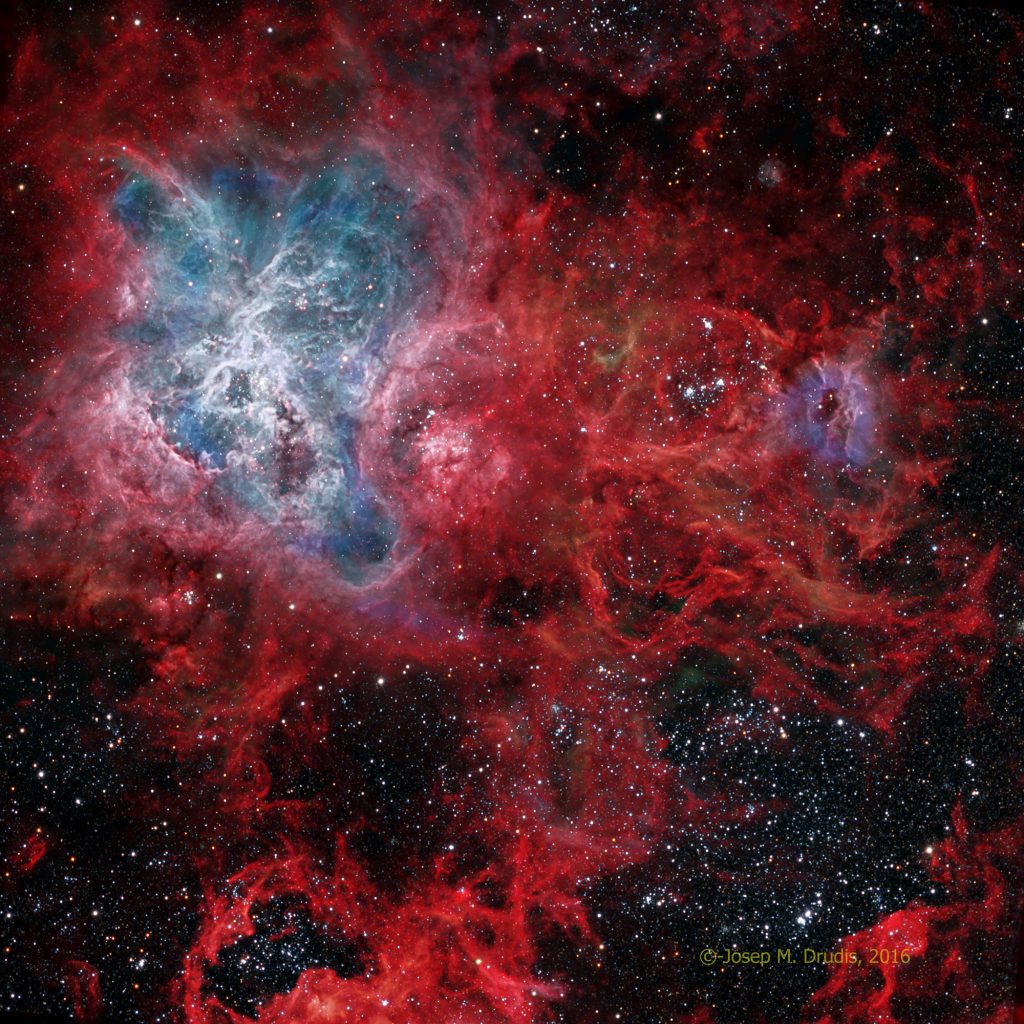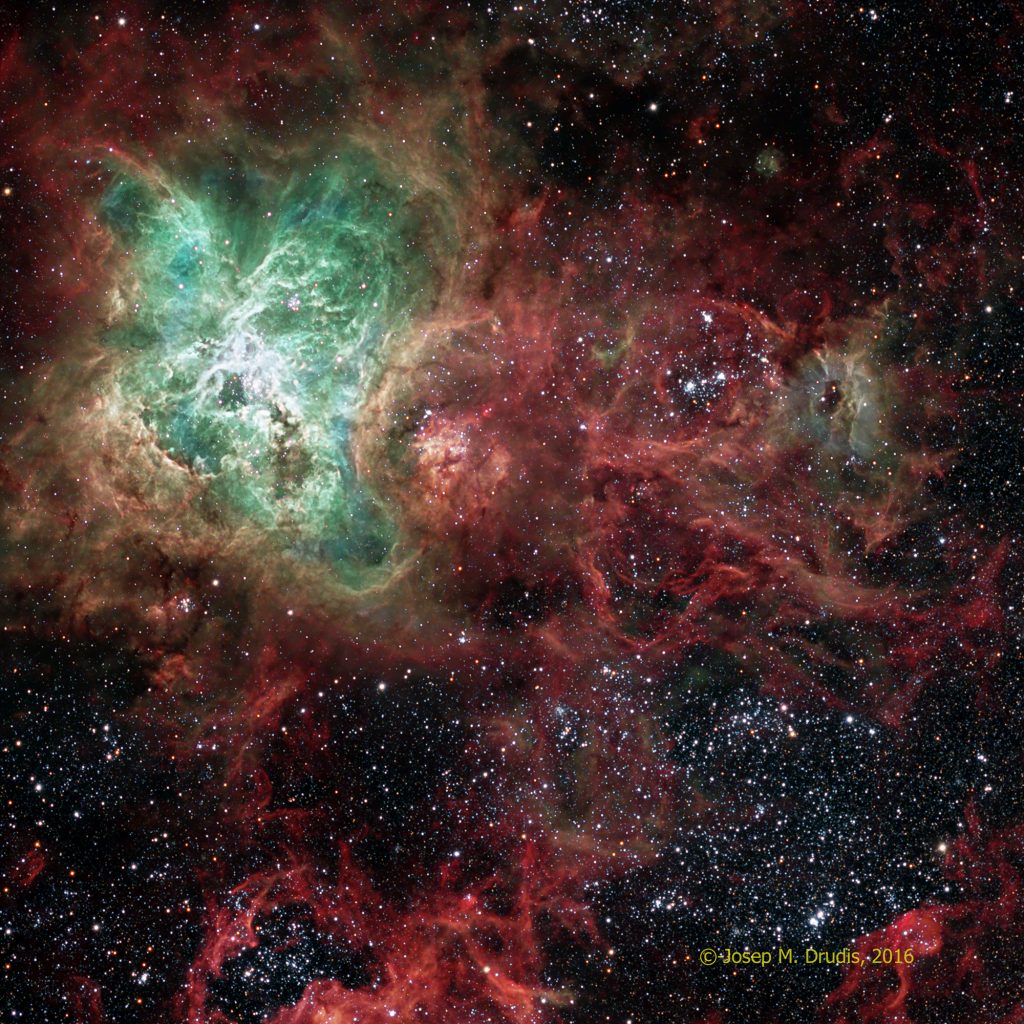Click on each of the images to see its larger version
This is a large emission nebula region, located in the Large Magellanic Cloud (which, by the way, is still being considered by many a satellite galaxy of our own Milky Way, but it has been determined to be an independent “close by” galaxy). This nebula is so huge that, should it be at the same distance of M42, the Orion Nebula, it would span about 75 degrees, one fifth of the sky, close to one half of what is visible in every single moment (180 degrees). Were it at this distance, it would even cast shadows.
This area, also known as 30 Doradus, was considered to be a single star, until Nicolas Louis de Lacaille (1751) discovered its “cloudy” nature. It is the region with the highest star formation rate known in our Local Group. This may be due to the fact that this nebula lies in the leading side of the LMC, and it is, therefore, exposed to the pressure of the colliding interstellar medium. It is powered by numerous stars of its central open cluster NGC 2070 (the real owner of this name…). This cluster is undergoing such a high rate of star birth that, taking into account that its gas mass is about 450,000 solar masses, it is expected to form a globular cluster in the future. In this area, SN1987A exploded about 30 years ago, being the closest supernova being studied in the telescope era. Its remains are not visible in this image, but are located in the frame (right off the center, just below the circular bluish patch).
The images of this object have been taken in both narrowband and broadband RGB. The image on the right only contains narrowband data and has been mapped in such a way as to stress more the details given by the OIII emission. This image has been mapped as H(r)O(g)O(g-b)H(b), with the corresponding percentages as to provide the “greenish-deviated”-natural color. The image on the left has been processed by blending HOS narrowband data and broadband RGB data in such a way as to reproduce its natural color, further blended with the image on the right, in order to stress and stand out more detail of the Oxygen emission data.
The image on the left has been selected as APOD (Astronomy Picture Of the Day, NASA) for November 8th, 2016:
http://apod.nasa.gov/apod/ap161108.html
Additional Information
Object
Name(s): NGC 2070. Caldwell 103. 30 Doradus.
Type: Emission Nebula
RA: 05h 38m 42s
Dec: -69º 06’ 06”
Constellation: Doradus
Size (arcmin): 40×25
Magnitude: +7 (Mag +5 to +8.5 found in scientific literature)
Distance: 170,000 ly
Image
Date: 2015-11-23 thru 2016-02-07 and 2016-10-19 thru 2016-10-23
Location: iTelescope.net, SSO near Coonabarabran, NSW Australia
Size (arcmin): 36×36
Telescope: Planewave CDK 20” f/6.8
Camera: SBIG STX16803 (4096x4096pix)
Guiding: Astrodon MonsterMOAG off-axis guider
Total exposure: 39.5 hours (Ha: 18.5 hs; OIII: 10.5 hs; SII: 2 hs; R: 3.5 hs; G: 3.25 hs; B: 1.75 hs). The image on the right has the same NB combination but only 1.5 hours of RGB, for the stars only.
Processing: CCDStack, Photoshop CC 2015.5 and PixInsight

